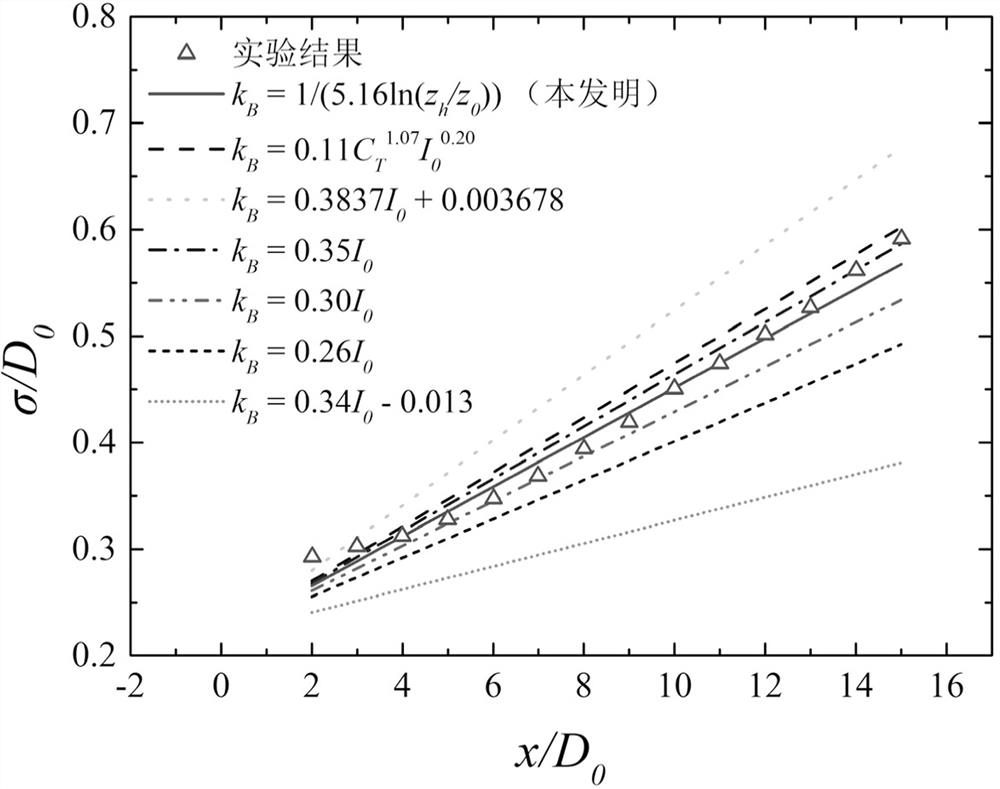Method for calculating standard deviation diffusion coefficient in Gaussian wake flow model of wind turbine
A diffusion coefficient, Gaussian wake technology, applied in computing, computer-aided design, electrical digital data processing, etc., can solve problems such as poor accuracy, Gaussian wake model cannot accurately predict the velocity of the wake region, and lack of versatility.
- Summary
- Abstract
- Description
- Claims
- Application Information
AI Technical Summary
Problems solved by technology
Method used
Image
Examples
Embodiment
[0094] Take a model wind turbine in a wind tunnel experiment as an example, such as Figure 2 to Figure 4 shown;
[0095] 1) Extract terrain roughness z 0 and wind turbine hub height z h
[0096] Its terrain roughness z 0 =0.00003m, wind turbine hub height z h =0.125m;
[0097] 2) Obtain the wake diffusion coefficient k w
[0098] According to the formula (9) to calculate the wake diffusion coefficient, it can be known that k w =0.06;
[0099] 3) Obtain the standard deviation diffusion coefficient k B
[0100] According to the formula (13) to calculate the standard deviation diffusion coefficient, it can be known that k B =0.0233;
[0101] 4) Get the standard deviation σ
[0102] The rotor diameter D of the model wind turbine 0 = 0.15m, initial standard deviation coefficient ε = 0.219, flow distance x / D 0 The value range of is from 2 to 15, and the standard deviation σ is calculated according to the formula (14). Calculated as image 3 As shown, in addition, a...
PUM
 Login to View More
Login to View More Abstract
Description
Claims
Application Information
 Login to View More
Login to View More - Generate Ideas
- Intellectual Property
- Life Sciences
- Materials
- Tech Scout
- Unparalleled Data Quality
- Higher Quality Content
- 60% Fewer Hallucinations
Browse by: Latest US Patents, China's latest patents, Technical Efficacy Thesaurus, Application Domain, Technology Topic, Popular Technical Reports.
© 2025 PatSnap. All rights reserved.Legal|Privacy policy|Modern Slavery Act Transparency Statement|Sitemap|About US| Contact US: help@patsnap.com



